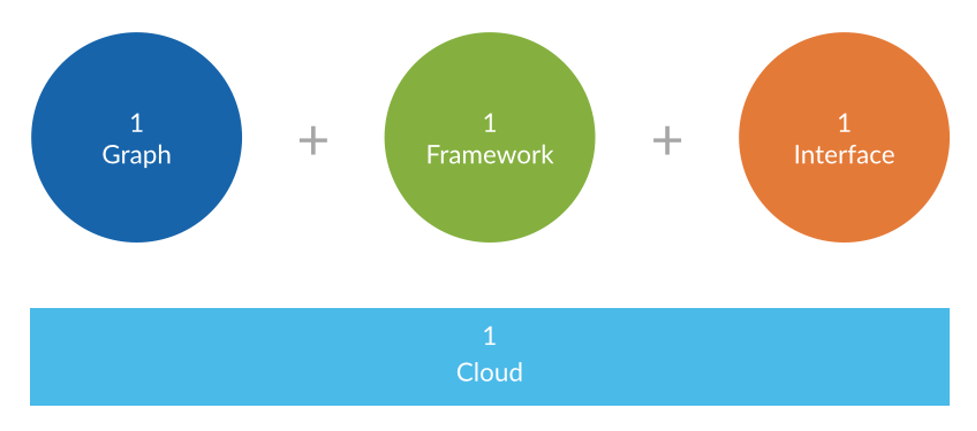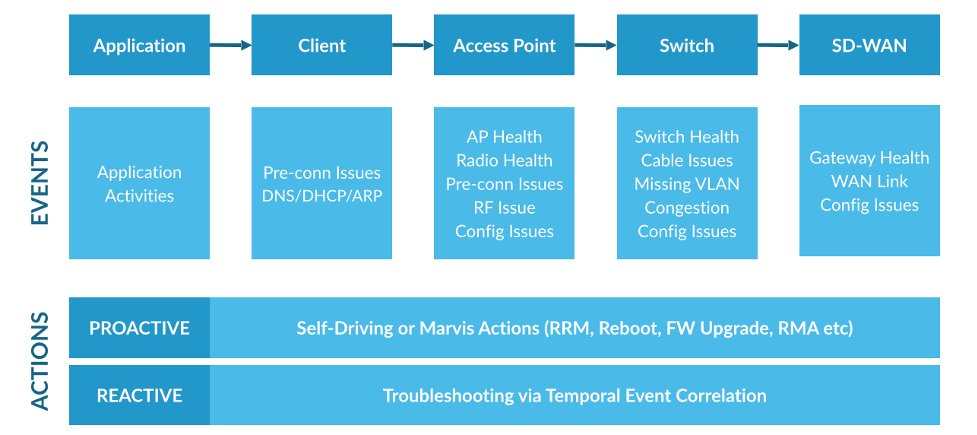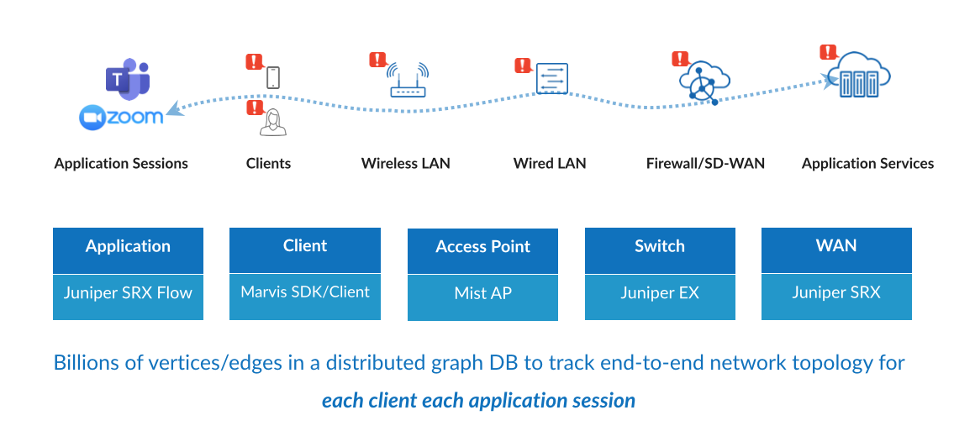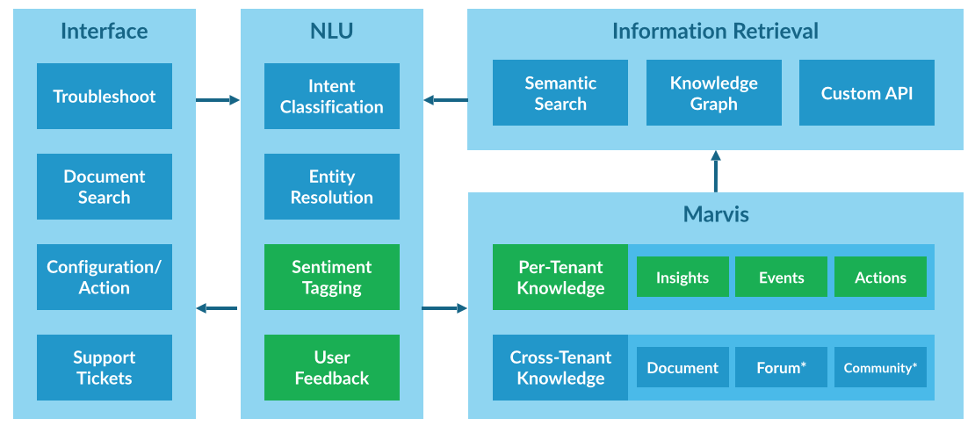Operations are your platform for progress in IT. Moving from build-to-run activities isn’t always glamorous, but it keeps value flowing throughout an organization. Typically, operational work is thought of as lower value, repetitive and reactive, but anomalous events and complex failures demand deep specializations and expertise no matter the domain. A calm and patient mindset may be an operational asset, but as environments around us accelerate and grow, their scope and scale can overwhelm those without the right tools and support. When combined with increasing service expectations and outcomes perceived as unattainable, it results in fatigue, burnout and churn. However, there is hope, and it necessitates an evolution from manual operations and automation to AIOps (Artificial Intelligence for IT Operations).
The journey from client to cloud is anything but simple. It requires more than mere connectivity and demands reliable, predictable and optimized flows. Traversing the access edge or WAN to reach cloud-based services often means multiple mediums are involved. Whether wired or wireless, any number of paths may be taken depending on the location and conditions. The dynamic nature of RF (Radio Frequency), routing and general internet weather means optimizing a specific Zoom call (per client, per session) demands a unified and holistic end-to-end view. This is also true for troubleshooting due to the myriad of variables and dependencies that underpin the success and quality of flows. Basic analytics and insights may bring limited visibility to operations, but with AIOps, there is an evolution to increased observability, dynamic learning and continuous service improvement. There is also a tangible shift from reactivity to proactivity. It’s not just the users and services that benefit, but operational teams who now have an omniscient and omnipresent virtual team member to query and engage.
What defines success in IT operations? Operational success is more than just avoiding downtime and device failures; it’s about how well we respond to issues, what we optimize for and how. Above all else, the focus is always on the integrity, security and quality of user experiences. The goal of AIOps is to bring simplicity, speed, efficiency and efficacy back to operational teams. AIOps scales faster and better than attempting to grow teams linearly as complexity and footprints increase. An AI platform can watch and continuously correlate across all elements, endpoints and sessions. Using a range of data sources and models, Ensemble Learning methods can immediately answer questions relating to site-specific root causes including highlighting what’s currently impacting SLEs (Service Level Expectations). Rather than incur the overheads of uncertain manual debugging and linear fault finding, AIOps can troubleshoot based on historical patterns, distributed states and deceptive dependencies. The difference with manual operations is pronounced and even more so at scale.
Enter: Marvis, the Virtual Network Assistant
Marvis, the Mist AI engine that powers Juniper’s AIOps, is cloud-based for reachability and built using a distributed microservices architecture that ensures scalability, elasticity and continued feature velocity. With a singular vision, “to make life simple”, this ethos manifests throughout Marvis and none more so than with a simple conversational chat interface. Irrespective of your technical level and whether you ask Marvis about issues or initiate recommended remediation, it’s all done via simple natural language. Marvis builds a holistic view of your footprint using one graph to model all entities and interactions, ensuring there’s no fragmentation or silos that would undermine an end-to-end understanding.

Additionally, Marvis’ unified event-action framework provides vendor-agnostic extensibility. This framework ingests events, configurations and flows across heterogeneous networks to form the core of Marvis’ decision engine.

It’s only when you begin to dig deeper and peek behind the scenes that you understand what’s required for effective AI and real results. Telemetry and events are ingested across LAN, WLAN, WAN and security contexts to power decisions, recommendations and closed-loop actions. This is achieved using a distributed graph database that understands clients, sessions and network pathing. It provides an accurate and correct context by forming a temporal entity correlation graph to truly understand the network end-to-end. Due to the framework and extensible architecture, it also supports multi-vendor footprints.

AIOps must also be simple to use. Marvis’ Natural Language Understanding (NLU) interface democratizes access and outcomes for teams while continuously learning from each interaction. By identifying operator sentiment, over and above explicit feedback, Marvis avails of Reinforcement Learning to continually improve answers and engagement. This virtuous cycle is accelerated further by leveraging per-tenant and cross-tenant knowledge.

Just as users can immediately and naturally use Google search, Siri and Amazon Alexa, anyone on your team can now use Marvis to troubleshoot complexity with simplicity and confidence. Building that confidence and trust requires transparency and “explainability”, so Marvis surfaces (or links to) information and data backing up insights or recommended actions.
On the one hand, AIOps is about simply managing complexity, but on the other, AIOps is about freeing ourselves from toil and a traditional reactive “ops” mindset to be able to focus on proactive pursuits. By recouping time and space, individuals and teams can confidently focus on and champion higher-value initiatives across an organization.
Put simply, AIOps is a natural evolution that empowers teams to work productively, purposefully and at scale.
























